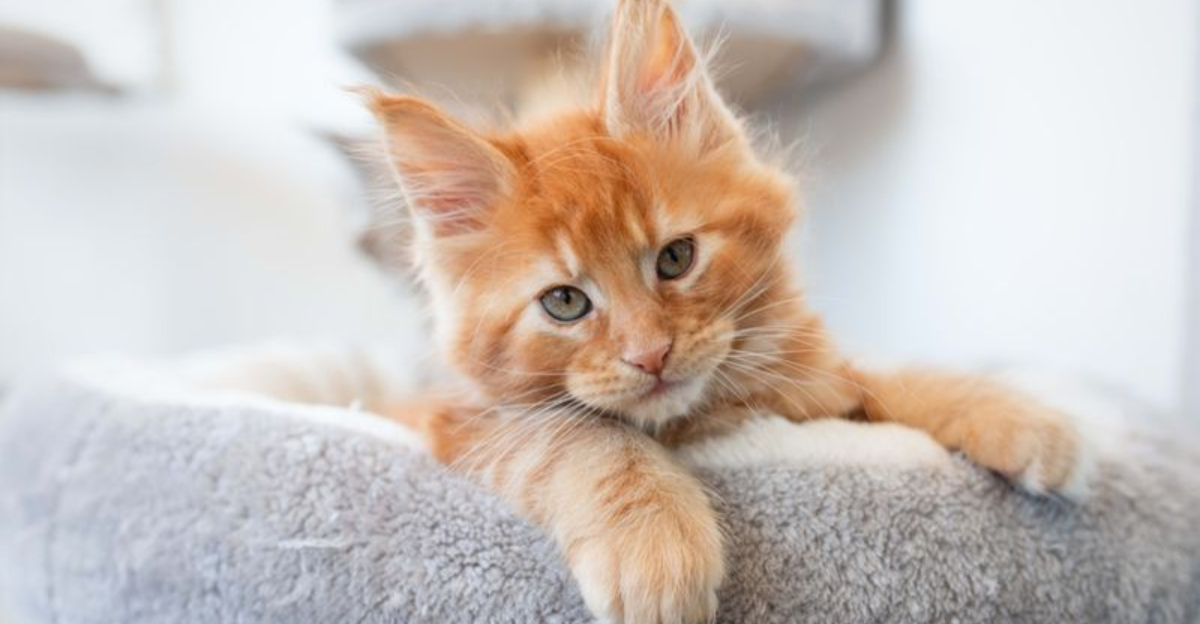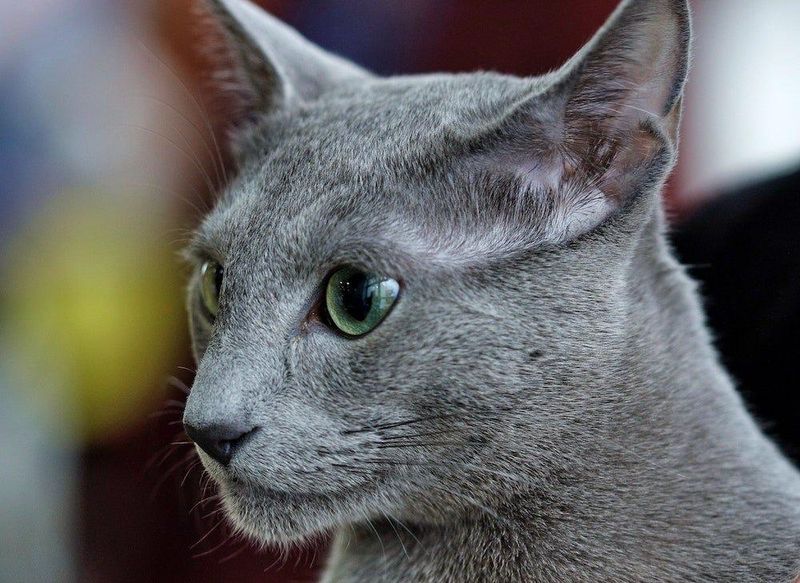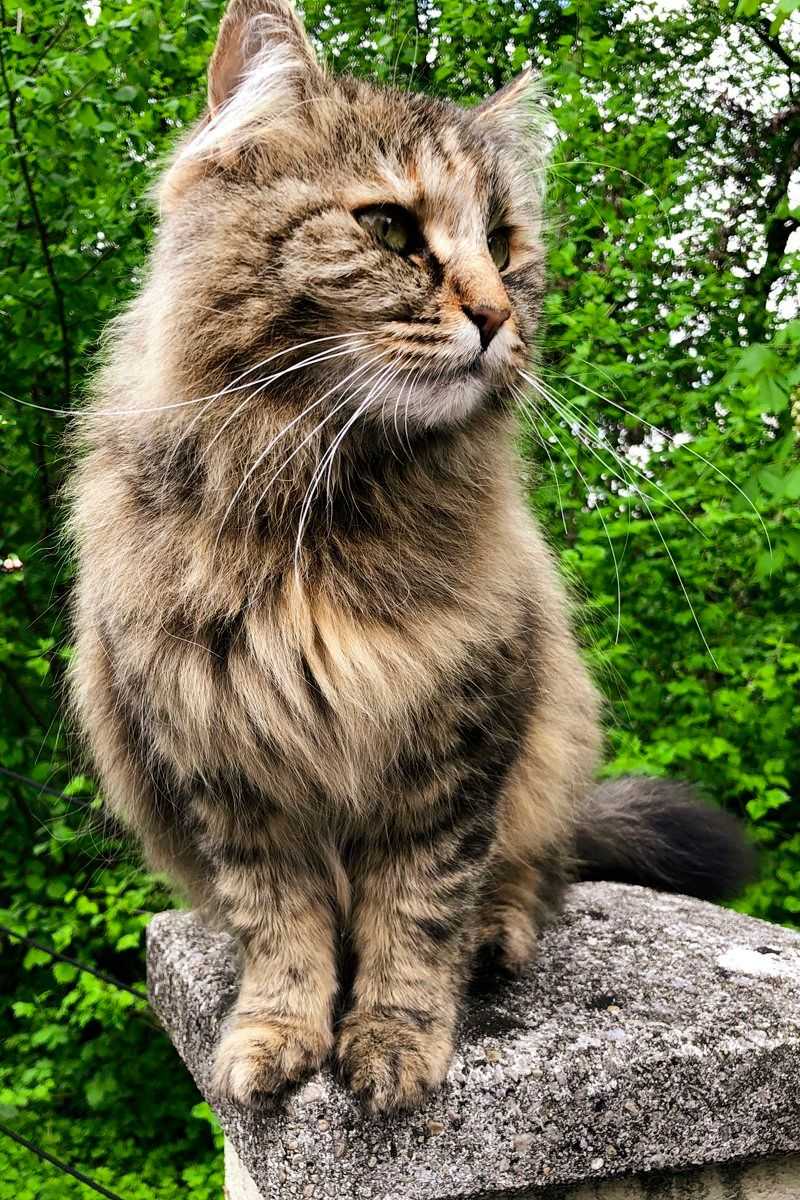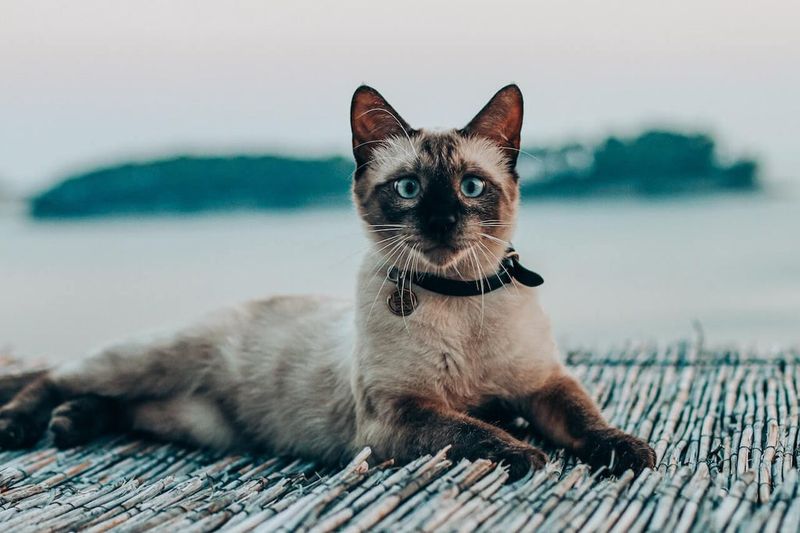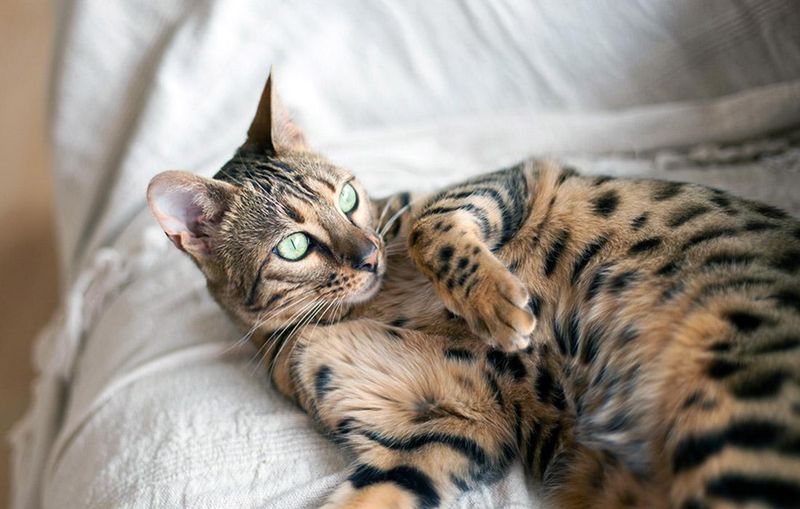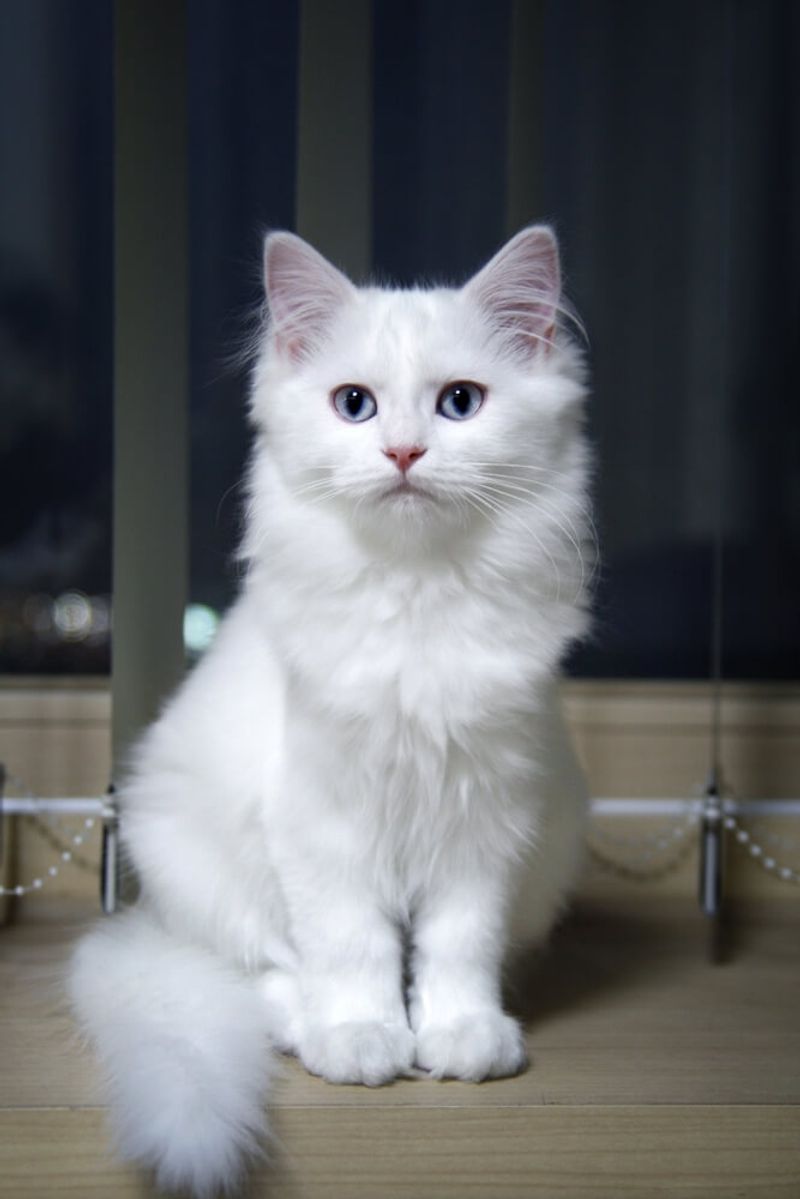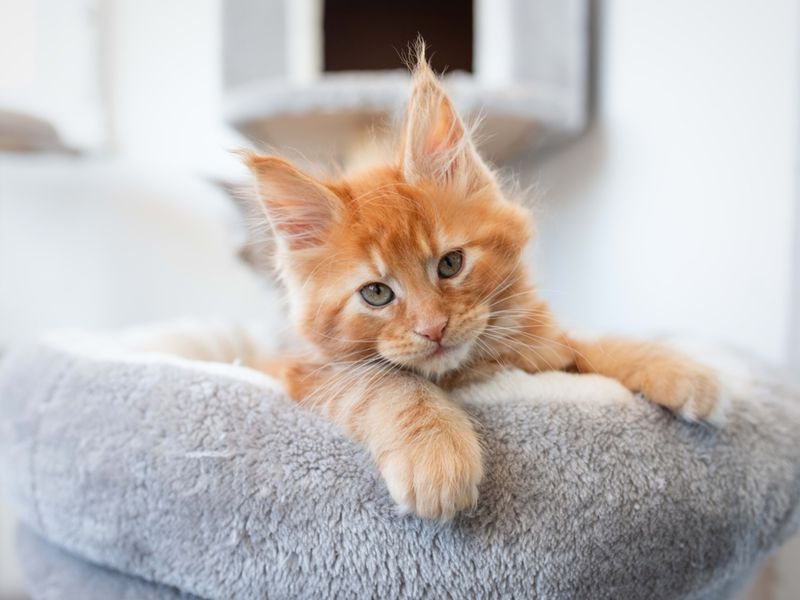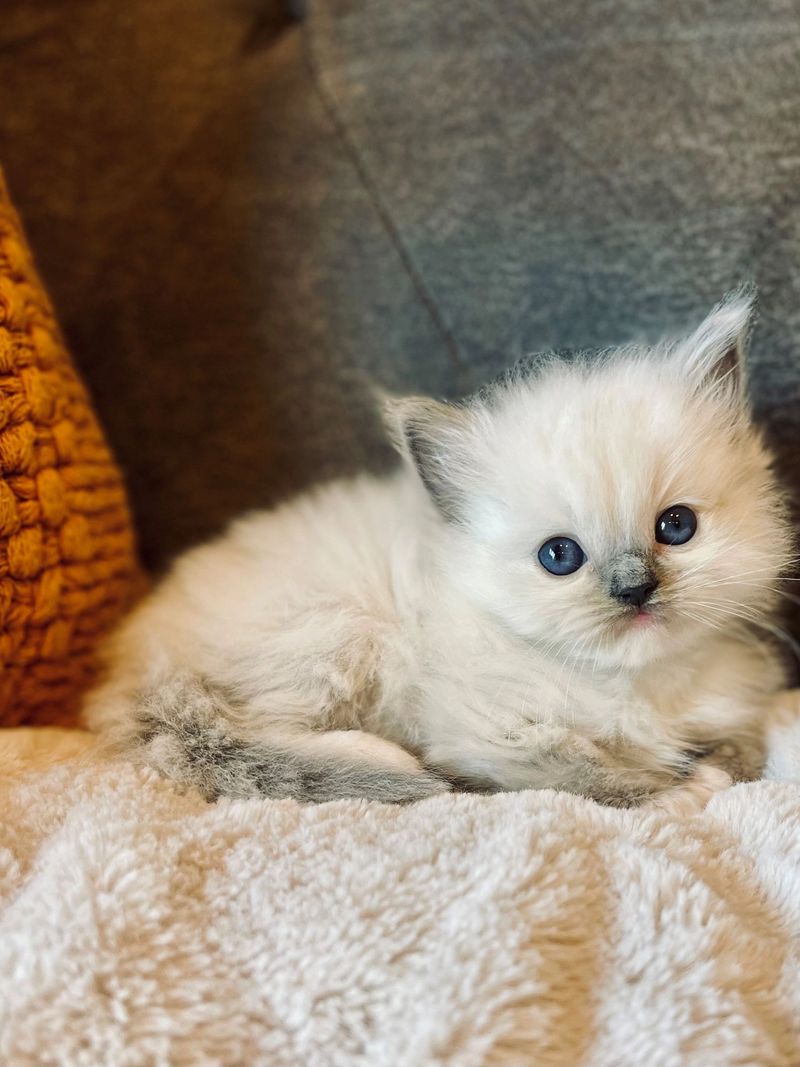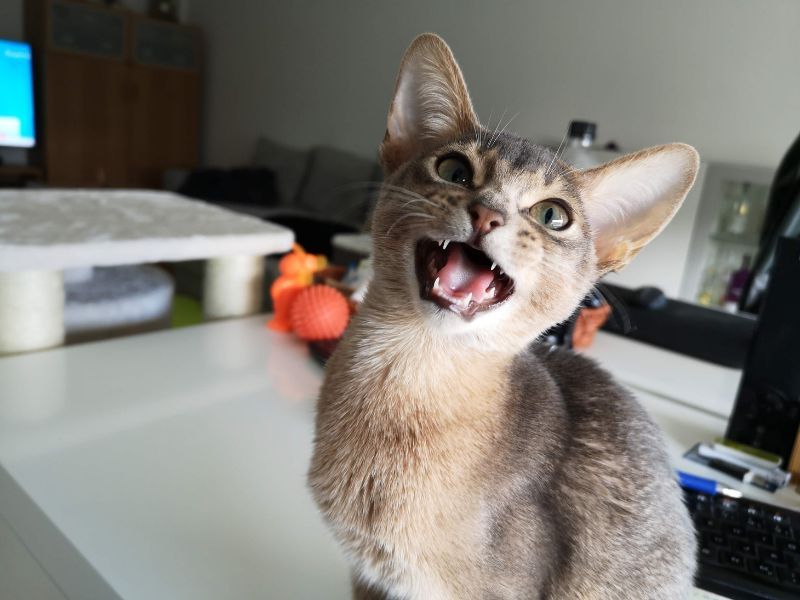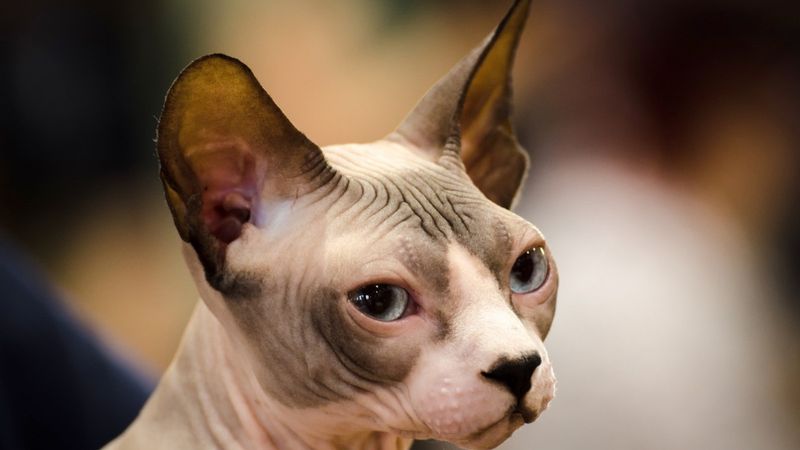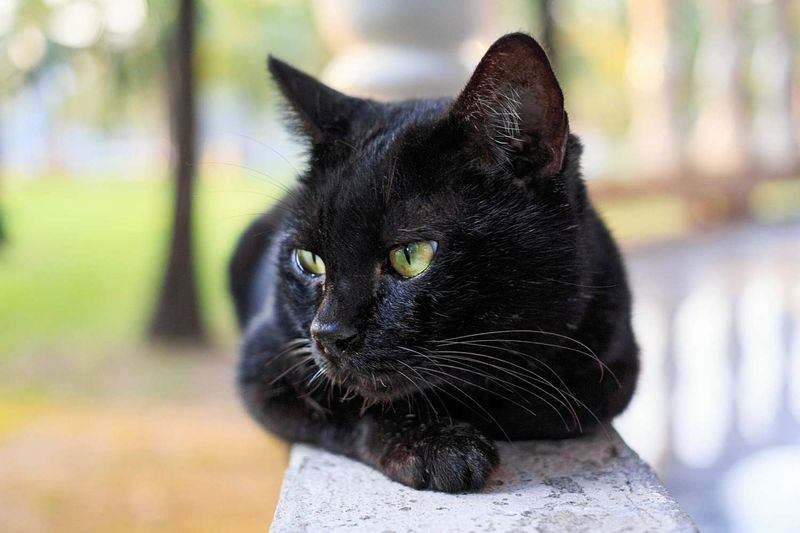📖 Table of Content:
Cats come with a wide range of personalities, much like people. Some are independent and enjoy quiet solitude, while others are social butterflies that seek out constant interaction. Each cat’s temperament can shape how well they adapt to different home environments.
Certain breeds are naturally more laid-back, preferring calm surroundings and minimal disruption. Others are energized by activity and thrive in homes filled with movement, people, and even other animals. Recognizing these differences can prevent mismatched expectations and behavioral issues.
Choosing a cat that aligns with your lifestyle can make a big difference in how smoothly the bond forms. A peaceful home may not suit a high-energy breed, just as a busy household may overwhelm a quiet, reserved feline. Matching a cat’s personality to its environment helps ensure long-term happiness for both the pet and its people.
1. Russian Blue
Russian Blues prefer quiet, predictable environments with minimal disruption to their routines. These intelligent cats form strong bonds with their primary caregiver but often remain wary of strangers and new animals.
When faced with household chaos or too many unfamiliar faces, Russian Blues typically retreat to secluded spots until the commotion subsides. Their reserved nature doesn’t mean they lack affection – they simply prefer to give it on their terms, usually in peaceful one-on-one sessions.
First-time cat owners might misinterpret their standoffish behavior as unfriendliness, but patience reveals their loyal, loving personality beneath their dignified exterior.
2. Norwegian Forest Cat
Independence defines the Norwegian Forest cat, a breed shaped by its rugged, untamed origins. With a lineage that traces back to wildcats, these regal felines favor freedom and adventure. They’re far more likely to be found climbing or roaming than curled up in a lap.
Their territorial instincts can make them hostile toward other pets, especially those who invade their established spaces. Despite their aloof reputation, they’re not completely antisocial – they simply engage on their own schedule.
Many Norwegian Forest cat owners report their pets observing household activities from elevated perches rather than participating directly. This breed thrives in homes where they can maintain some distance while still being part of the family circle.
3. Siamese
Fiercely devoted, Siamese cats expect to be the center of their human’s world. They can grow jealous when attention is divided, especially if other pets are involved. Their signature meows become even more intense when they feel ignored or overlooked.
These intelligent felines form possessive bonds with their favorite person and may act out through destructive behaviors when forced to compete for affection. Their high energy levels and need for mental stimulation make them poor matches for busy households where they can’t receive consistent interaction.
Without adequate engagement, Siamese cats develop anxiety that manifests as excessive meowing, inappropriate elimination, or aggressive tendencies toward other household pets.
4. Bengal
With wild roots tracing back to the Asian leopard cat, Bengals often bring a fierce prey drive into the home. Their instincts can make them difficult roommates for smaller animals. Hamsters, birds, and even tiny dogs might be seen more as prey than playmates.
These energetic cats require extensive territory and become frustrated in crowded environments where they can’t burn off their considerable energy. A bored Bengal quickly becomes a destructive Bengal, climbing curtains or knocking items off shelves.
Their intelligence demands constant mental challenges, and they grow restless in homes where they must compete for resources or attention. For this reason, Bengals often do best as solo pets with dedicated human playmates.
5. Turkish Angora
Turkish Angoras develop strong hierarchical views about their household position. These elegant cats often appoint themselves as the family supervisors, determined to maintain their top-ranking status among other pets.
When challenged by newcomers, Turkish Angoras display remarkable stubbornness and may engage in passive-aggressive behaviors like strategic furniture soiling or excessive grooming. Their intelligence makes them formidable opponents in household politics.
Unlike some solitary breeds, Turkish Angoras don’t want to be alone – they simply want to be in charge. This dominant personality trait makes introductions to existing pets particularly challenging, requiring careful management to prevent ongoing power struggles.
1. Maine Coon
Known for their calm and tolerant temperament, Maine Coons make excellent additions to multi-pet households. Even in the face of smaller animals stealing their toys or invading their space, they rarely show signs of aggression. Their gentle demeanor allows them to coexist peacefully with other pets.
Their playful personality extends well into adulthood, making them excellent companions for children and other energetic pets. Unlike more territorial breeds, Maine Coons willingly share their space and resources with newcomers after brief adjustment periods.
Their communication style includes soft chirps and trills rather than hisses or growls, signaling their cooperative approach to family living. For households with existing pets or plans to add more animals, Maine Coons provide a stabilizing, peaceful influence.
2. Ragdoll
The name “Ragdoll” comes from their tendency to relax completely when picked up, a characteristic of their gentle, placid nature. These cats are not easily startled and are tolerant of being handled by children or explored by dogs. Their calm demeanor makes them highly adaptable to family life.
Unlike more sensitive breeds, Ragdolls thrive amid household commotion, often following family members from room to room rather than hiding from activity. Their patient nature makes them ideal for homes with young children who are still learning proper pet handling.
Ragdolls show remarkable adaptability when new pets join the household, typically greeting newcomers with curiosity rather than hostility. Their non-territorial attitude prevents the resource guarding that often causes conflict in multi-pet homes.
3. Abyssinian
With their endless energy and sharp social instincts, Abyssinians excel in homes filled with activity. They don’t view additional family members, whether furry or human, as intruders but as potential playmates. Their curiosity and enthusiasm make them a perfect match for busy households.
Their confident, outgoing nature helps them establish friendly relationships with dogs, particularly those who enjoy interactive play. Abyssinians rarely show fear-based aggression, instead approaching new situations with curious enthusiasm.
Many Abyssinian owners report their cats actively seeking out interaction with visitors rather than hiding when guests arrive. This social butterfly quality makes them excellent additions to households with frequent visitors or multiple pets, as they genuinely enjoy the stimulation of a lively environment.
4. Sphynx
With their need for constant companionship and touch, Sphynx cats fit perfectly into homes with other pets or active families. Their hairless bodies create a natural craving for warmth, which makes them seek out cuddles with other animals, breaking the typical feline tendency to keep their distance. These cats are all about affection and warmth.
These social butterflies greet visitors at the door and insert themselves into every household activity. Their playful antics and clownish behavior entertain children and adults alike.
Sphynx cats develop strong attachments to both humans and animal companions, often sleeping in piles with other pets. Their need for interaction makes them unsuitable for homes where they would be left alone for long periods, but ideal for bustling households with constant activity.
5. Bombay
Bombay cats combine the appearance of a miniature panther with the heart of a social butterfly. These glossy black felines actively seek out interaction with every family member, showing no favoritism that might create household tension.
Their adaptable nature makes them exceptional companions in homes with varied schedules and multiple caretakers. Unlike breeds that bond primarily with one person, Bombays distribute their affection generously among all household members.
These intelligent cats learn household routines quickly and adjust their behavior to accommodate new pets or family additions. Their moderate energy level strikes the perfect balance – playful enough to entertain children but calm enough to coexist peacefully with elderly family members or less active pets.
